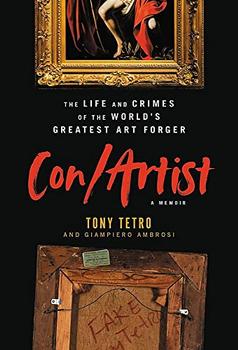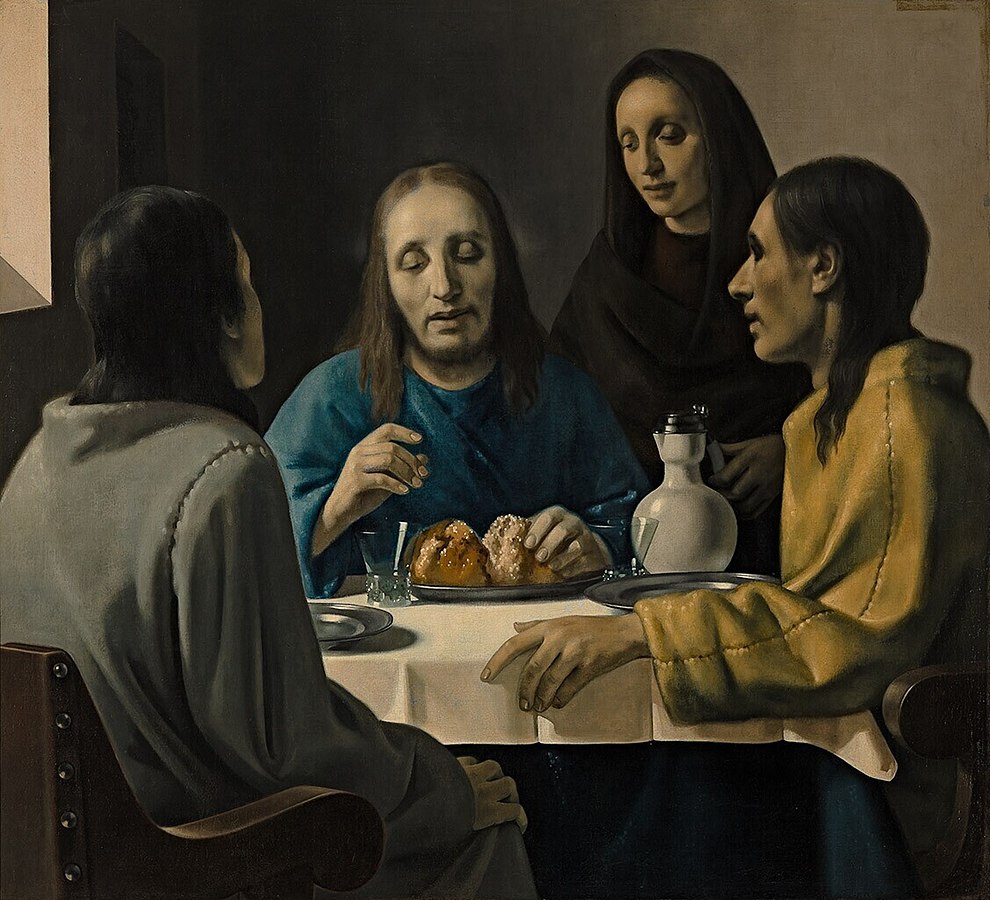Summary | Excerpt | Reviews | Beyond the Book | Read-Alikes | Genres & Themes | Author Bio

The Life and Crimes of the World's Greatest Art Forger
by Tony Tetro, Giampiero AmbrosiThis article relates to Con/Artist
 In Con/Artist, Tony Tetro explains the value of provenance, meaning how a painting came to be in a seller's possession. Sometimes, the provenance of a forgery is what we remember. In 1945, Dutch police arrested Han van Meegeren for collaborating with Nazis by selling them art. During the trial, van Meegeren explained what really happened. The trial elevated his status from forger to folk hero.
In Con/Artist, Tony Tetro explains the value of provenance, meaning how a painting came to be in a seller's possession. Sometimes, the provenance of a forgery is what we remember. In 1945, Dutch police arrested Han van Meegeren for collaborating with Nazis by selling them art. During the trial, van Meegeren explained what really happened. The trial elevated his status from forger to folk hero.
Van Meegeren had studied at the Royal Academy of Art in The Hague, but his work never caught on. His teachers and art critics alike said that it was fine technically but lacked originality. And in a time when abstract art was all the rage, van Meegeren's paintings of forest creatures held little appeal. Initially, he responded to harsh critics by writing letters and articles in defense of his work. Then he had a better idea: he could prove them all wrong by doing breathtaking forgeries.
The Dutchman set his sights high: he wanted to paint an imitation Vermeer. This was a lofty choice in terms of skill, but Vermeer provides great opportunities for forgers. Despite a career that spanned more than two decades, there are only about 34 paintings known to be almost certainly Vermeer originals, and at least half a dozen that are known to have existed but are missing. Van Meegeren set out to "create" some of those lost paintings.
To add to the effect of his work, he aged and dried the paintings by putting them in the oven until cracks appeared to his liking. Then he applied a mixture of oil paint and a synthetic resin called Bakelite, which would sink into the cracks. He also used materials that would have been available to Vermeer, which involved making a badger hide brush. Clearly, van Meegeren was in this for the long con.
In 1937 he sold a painting to art historian and Vermeer expert Abraham Bredius. An associate of van Meegeren's posed as a lawyer representing an estate and approached him with a painting called Christ and the Disciples at Emmaus. Bredius raved about it in Burlington Magazine, an authority on art at the time, writing that it was "the masterpiece of Johannes Vermeer of Delft...quite different from all his other paintings and yet every inch a Vermeer."
Van Meegeren's forgeries were remarkably good, and he made the equivalent of several million dollars in today's money. But there was one sale that made him notorious: a Vermeer fake sold to Nazi leader Hermann Göring, who paid by returning Dutch art the Nazis had pillaged. (The number of paintings returned differs by sources, but there were at least 100.) The Allied forces raided the Austrian salt mine where Göring kept his art, including Woman Taken in Adultery, van Meegeren's fake Vermeer. They were able to trace it to van Meegeren, and charged him with conspiring with the Nazis by selling them a national treasure — which, at the time, was a capital crime. To prove that he had not collaborated, Van Meegeren had to reveal himself to be a forger.
In his trial, he did just that, maintaining that Woman Taken in Adultery was a fake and he hadn't sold valuable art to the Nazis. Because of the quality of the work, no one believed him. Van Meegeren offered up a unique strategy to resolve the question: he would replicate the painting right there in the courtroom for all to see. His one condition was that he would have to be in the same state as at home, which required him to be drunk and high on morphine. Surprisingly, the court permitted this, and he got to work. Upon completion, everyone marveled at his work, and he was then arrested for forgery. Word spread about the man who pranked the Nazis and reclaimed Dutch treasures. A survey at the time found him to be the second most popular person in the Netherlands, after the prime minister.
The general esteem contributed to van Meegeren receiving a light sentence of just one year. Sadly, he died of a heart attack before his prison term even began. But he had finally achieved the fame and glory he'd always wanted. In the process, experts who'd been fooled were discredited. The art community as a whole had to come up with new strategies to detect fakes. Some connoisseurs took extra care in dating and attributing paintings and some stopped doing authentications altogether.
Hopefully, Van Meegeren found some satisfaction in shaking up the art world. He certainly demonstrated his technical skills, and despite working as a forger, his career showed quite a bit of originality.
Van Meegeren's Christ and the Disciples at Emmaus (1937), courtesy of the Museum Boijmans Van Beuningen
Filed under Music and the Arts
![]() This article relates to Con/Artist.
It first ran in the January 18, 2023
issue of BookBrowse Recommends.
This article relates to Con/Artist.
It first ran in the January 18, 2023
issue of BookBrowse Recommends.
Your guide toexceptional books
BookBrowse seeks out and recommends the best in contemporary fiction and nonfiction—books that not only engage and entertain but also deepen our understanding of ourselves and the world around us.